Las "tags/iniciativas" nos parecieron una excelente herramienta para la interacción con los miembros de #AquaticSentinels!🐬 Agradecemos mucho el apoyo de @actioncats
Puedes visitar su blog aquí!😄
We found the "tags/initiatives" an excellent tool for interaction with #AquaticSentinels members!🐬 We really appreciate the support of @actioncats
You can visit her blog here!😄
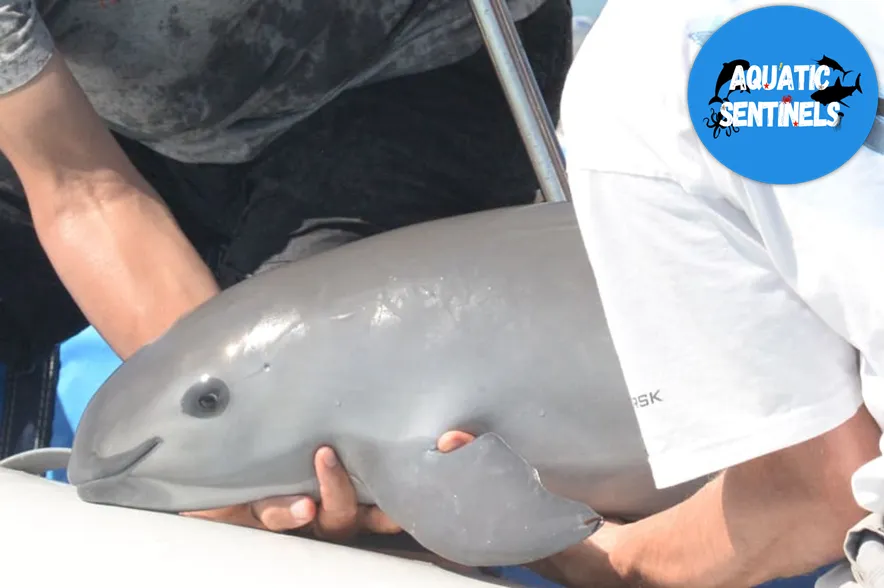
Photo credits📸: Melissa Gaskill (Vaquita CPR)
📍Punta San Felipe, Baja California

¿Porqué hacemos un TAG sobre la vaquita?/ Why do we do a TAG about the vaquita?
Sabemos que en los últimos años las especies marinas han sufrido un impacto negativo en sus poblaciones, seguramente tienes una idea de cuáles son las razones...
👉Contaminación, pesca excesiva, aumento de temperatura y muchos otros. Por supuesto, el ser humano tiene mucha responsabilidad en esto.
Una de las cosas que podemos hacer a favor de nuestros océanos es INFORMARNOS y EDUCARNOS de tal manera que poco a poco podamos formar una cultura que aprecia y cuida el mar, y precisamente ese es el objetivo de estos TAGS✔️...
We know that in recent years marine species have suffered a negative impact on their populations, surely you have an idea of what the reasons are...
👉Pollution, overfishing, temperature increase and many others. Of course, the human being has a lot of responsibility in this.
One of the things we can do in favor of our oceans is to INFORM and EDUCATE ourselves in such a way that little by little we can form a culture that appreciates and cares for the sea, and that is precisely the objective of these TAGS✔️...
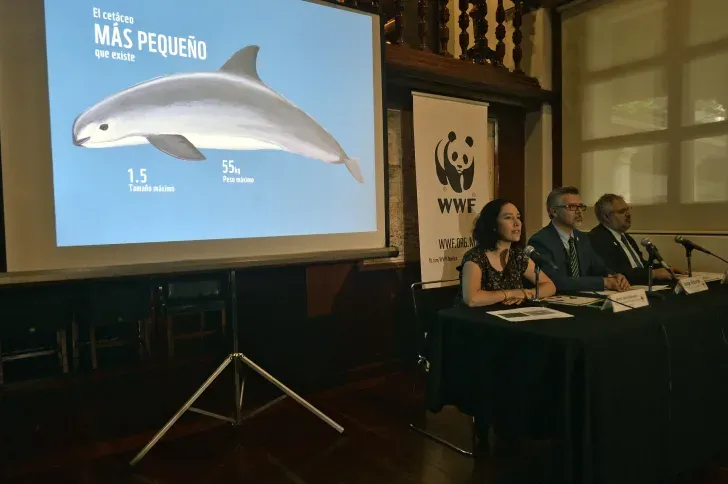
Photo credits📸: Pedro Pardo
📍México

Tenemos una sorpresa para ti! (se premiarán a las mejores contribuciones)/We have a surprise for you! (the best contributions will be awarded)🏅
La idea es que cada miembro contribuya y enriquezca las siguientes 5 cuestiones acerca de la vaquita, para poder participar...
- El título de tu post deberá ser "TAG: 5 interesting facts about the vaquita marina", publica tu post en Aquatic Sentinels Community
- Usa la etiqueta #aquaticsentinels en donde tú prefieras dentro de tu post.
- Rebloguear esta publicación para que llegue a más personas.
- En los comentarios coloca tu entrada (el link de tu participación)
- Contesta las 5 preguntas con información de sitios oficiales (ten cuidado con Wikipedia, ahí cualquier persona puede entrar a modificar la información, puedes entrar a sitios con terminación ".org").
📢Los ganadores serán escogidos por los administradores de AS mediante una revisión minuciosa, el valor del contenido y la fiabilidad de las fuentes serán las principales cuestiones a considerar
The idea is that each member contributes and enriches the following 5 questions about the vaquita, in order to participate...
- The title of your post should be "TAG: 5 interesting facts about the vaquita marina", post your entry in the Aquatic Sentinels Community
- Use the #aquaticsentinels tag wherever you prefer within your post
- Reblog this publication to reach more people.
- In the comments place your entry (the link of your participation).
- Answer the 5 questions with information from official sites (be careful with Wikipedia, there anyone can enter to modify the information, you can enter sites with the ending ".org").
📢The winners will be chosen by the administrators of AS through a careful review, the value of the content and the reliability of the sources will be the main issues to be considered.
👉Considera este post como un ejemplo para escribir el tuyo/ Consider this post as an example to write yours❗️
👉La duración de esta iniciativa finaliza al mismo tiempo que este post (1 semana)/ The duration of this initiative ends at the same time as this post (1 week)
Los ganadores podrán ganar:/ Prizes to win:
🥇1st : 10 HIVE
🥈2st : 7 HIVE
🥉3st : 3 HIVE

Recuerda las reglas generales de la comunidad/ Remember the general rules of the community
👉Solo publica contenido original creado por ti.
👉Siempre haga referencia a la fuente de imágenes e información que usa en los textos, incluso si son suyos... ¡el plagio está estrictamente prohibido!
👉Además de las referencias en las fotografías, será necesario escribir una descripción para que AS pueda dar curaduría o apoyo
👉 Se prohíbe el lenguaje ofensivo y cualquier otro comportamiento que ofenda a los demás.
👉¡Calidad sobre cantidad!
👉Only post original content created by you.
👉Always refer to the source of images and information you use in the texts, even if they are yours ... plagiarism is strictly prohibited!
👉In addition to the references in the photographs, it will be necessary to write a description so that AS can provide curation or support
👉 Offensive language and any other behavior that offends others is prohibited.
👉Quality over quantity!
Ahora sí, hablemos sobre la vaquita!/ Now let's talk about the vaquita!

1. ¿Quién es la vaquita marina?/ Who is the vaquita porpoise?
Muchas veces suele confundirse a la vaquita con un "delfín pequeño" por lo que la gente suele pensar que pertenece a la familia de los delfines, pero en realidad, pertenece a la familia de las marsopas (Phocoenidae), y de hecho, es el miembro más pequeño de las marsopas. La longitud promedio de las hembras es de 140,6 cm; los machos son un poco más pequeños (134,9 cm). Por supuesto, son mamíferos (Brownell et al., 1987)
The vaquita is often confused with a "small dolphin" so people often think that it belongs to the dolphin family, but in reality, it belongs to the porpoise family (Phocoenidae), and in fact, it is the smallest member of porpoises. The average length of the females is 140.6 cm; males are slightly smaller (134.9 cm). Of course, they are mammals (Brownell et al., 1987)
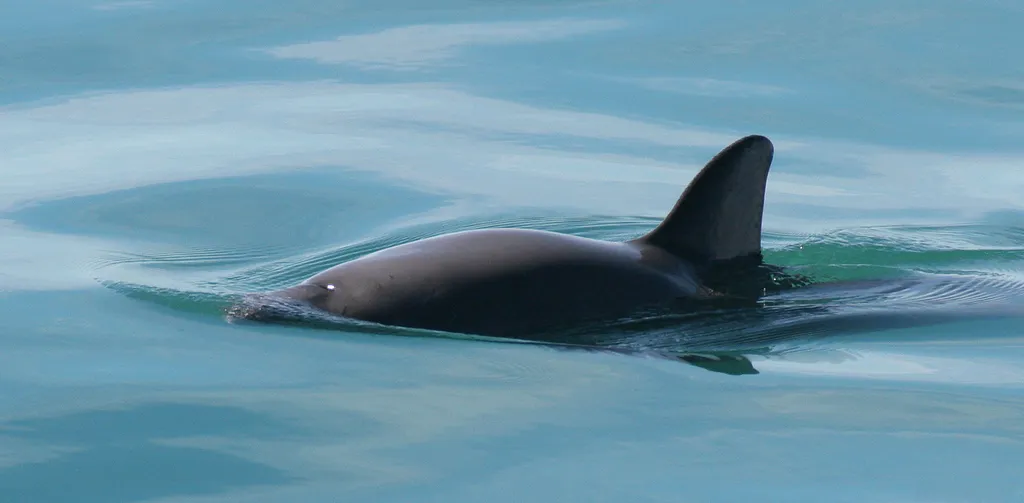
Photo credits📸: Paula Olson
📍Baja California,México
Se pueden diferenciar fácilmente de otras marsopas por su patrón de coloración, en la región dorsal vemos colores grises pálidos y en el vientre o area ventral vemos un color blanco, pero lo que más se puede destacar de su apariencia (además de su longitud corta) son esos anillos oculares como "parches" en color negro al rededor de sus ojos (Vidal et al., 1999).
They can be easily differentiated from other porpoises by their color pattern, in the dorsal region we see pale gray colors and in the belly or ventral area we see a white color, but what can be highlighted most about their appearance (in addition to their short length) they are those eye rings as "patches" in black around their eyes (Vidal et al., 1999).

2. ¿En dónde vive la vaquita marina?/ Where does the vaquita live?
Ciertamente no todo el mundo conoce a la vaquita marina, según información de Rojas-Bracho y colaboradores en el 2006, esto se debe a su limitada distribución, lo que lo hace una de las especies de mamíferos marinos más raras! Su distribución se limita solamente a una pequeña porción de la parte superior del Golfo de California (Silber et al., 1994; Gerrodette et al., 1995; Vidal, 1995; Jaramillo-Legorreta et al., 1999).
En la página oficial de la IUCN (International Union for Conservation of Nature's) observamos que específicamente las podemos encontrar al norte de México. También podemos ver que el último estudio dice que solo quedan aproximadamente 18 vaquitas marinas en el mundo! desafortunadamente, se encuentran en PELIGRO CRÍTICO🤕.
Certainly not everyone knows the vaquita, according to information from Rojas-Bracho et al. In 2006, this is due to its limited distribution, which makes it one of the rarest species of marine mammals! Its distribution is limited to only a small portion of the upper part of the Gulf of California (Silber et al., 1994; Gerrodette et al., 1995; Vidal, 1995; Jaramillo-Legorreta et al., 1999).
On the official website of the IUCN (International Union for Conservation of Nature's) we observe that specifically we can find them in the north of Mexico. We can also see that the latest study says that there are only about 18 vaquitas left in the world! unfortunately, they are in CRITICAL DANGER🤕.
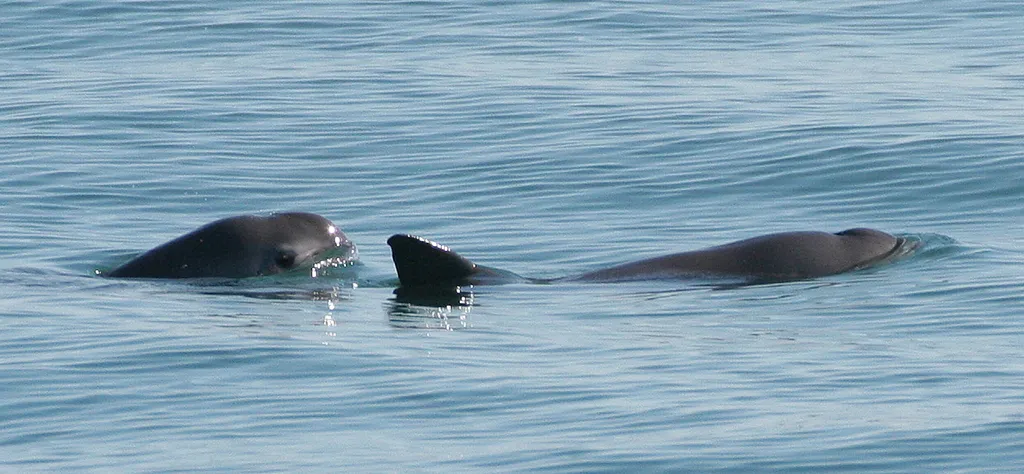
Photo credits📸: Paula Olson
📍Baja California,México

3. ¿Cuál es el comportamiento de las vaquitas marinas? ¿son animales que forman grupos?/ What is the behavior of the sea vaquitas? Are they animals that form groups?
En realidad la información a cerca de la organización social en esta especie es escasa, no se sabe mucho acerca de esto. En promedio, casi siempre se pueden ver a las vaquitas en parejas, aunque en raras ocasiones también se les ha visto formar grupos de entre 8 hasta 10 individuos!(Jaramillo-Legorreta et al., 1999).
Sin embargo, parece que estas agregaciones están relacionadas con las embarcaciones pesqueras, es decir, parece que las vaquitas tienden a formar grupos grandes cuando ven venir a embarcaciones camaroneras, por lo que lo más probable es que se agrupan para buscar comida.
In fact, the information about the social organization in this species is scarce, not much is known about this. On average, vaquitas can almost always be seen in pairs, although on rare occasions they have also been seen forming groups of 8 to 10 individuals! (Jaramillo-Legorreta et al., 1999).
However, it seems that these aggregations are related to fishing boats, that is, it seems that vaquitas tend to form large groups when they see shrimp boats coming, so it is most likely that they group to look for food.
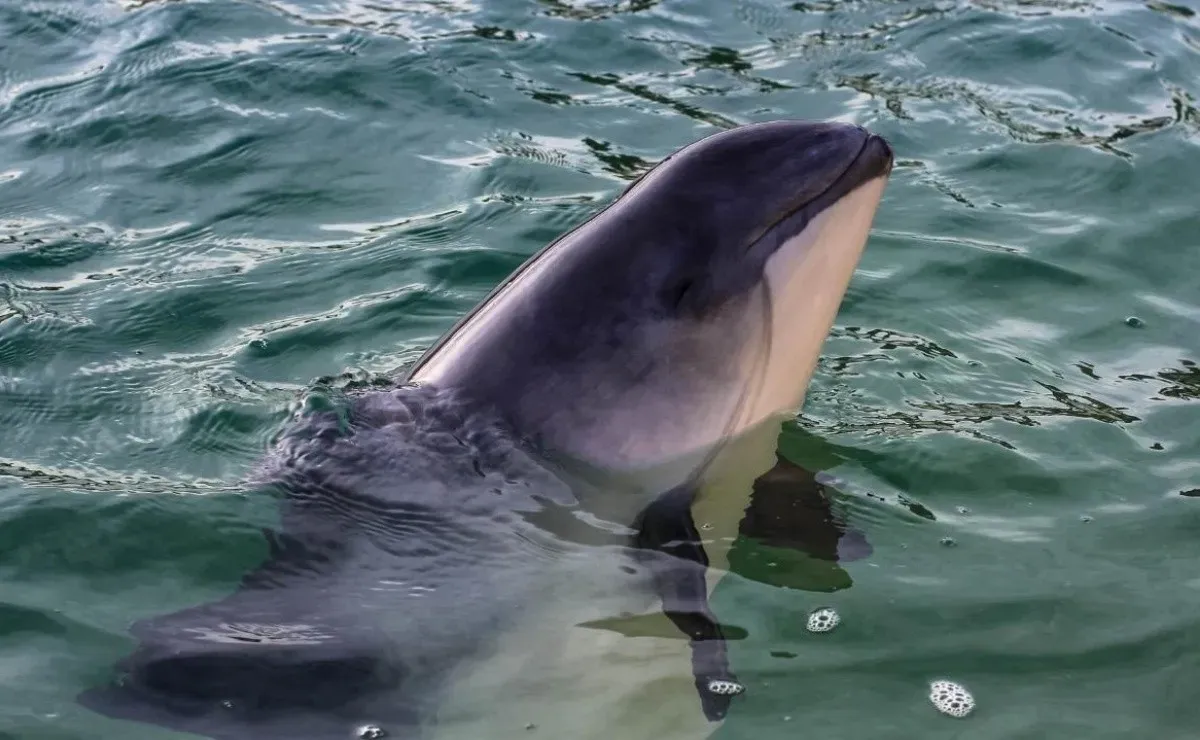
Photo credits📸: Arantxa Gonzalez
📍Baja California,México

4. ¿Qué acciones se han realizado para salvar a la vaquita marina?/ What actions have been taken to save the vaquita porpoise?
Para la protección de la vaquita y otras especies, el gobierno mexicano creó la Reserva de la Biosfera Alto Golfo de California y Delta del Río Colorado desde el 10 de junio de 1993. ¿Ha sido suficiente? la respuesta es no, ha medida que pasa el tiempo, el número de vaquitas ha ido disminuyendo a pesar de que esta Reserva ya tiene varios años desde su fundación, debido a que parece que la distribución de la vaquita va más allá de los límites de esta reserva ecológica (Gerrodette et al., 1995; Jaramillo-Legorreta et al., 1999).
En otros esfuerzos, paises como Reino Unido, Noruega, Canadá, Estados Unidos y México conforman el Comité Internacional para la Recuperación de la Vaquita (CIRVA), en donde los científicos se encargan de diseñar planes de preservación con base en los datos científicos de la vaquita (Rojas-Bracho y Jaramillo-Legorreta, 1999).
For the protection of the vaquita and other species, the Mexican government created the Upper Gulf of California and Colorado River Delta Biosphere Reserve since June 10, 1993. Has it been enough? The answer is no, as time passes, the number of vaquitas has been decreasing despite the fact that this Reserve has already been several years since its foundation, because it seems that the distribution of the vaquita goes beyond the limits of this ecological reserve (Gerrodette et al., 1995; Jaramillo-Legorreta et al., 1999).
In other efforts, countries such as the United Kingdom, Norway, Canada, the United States and Mexico make up the International Committee for the Recovery of the Vaquita (CIRVA), where scientists are in charge of designing preservation plans based on scientific data from the vaquita (Rojas-Bracho and Jaramillo-Legorreta, 1999).
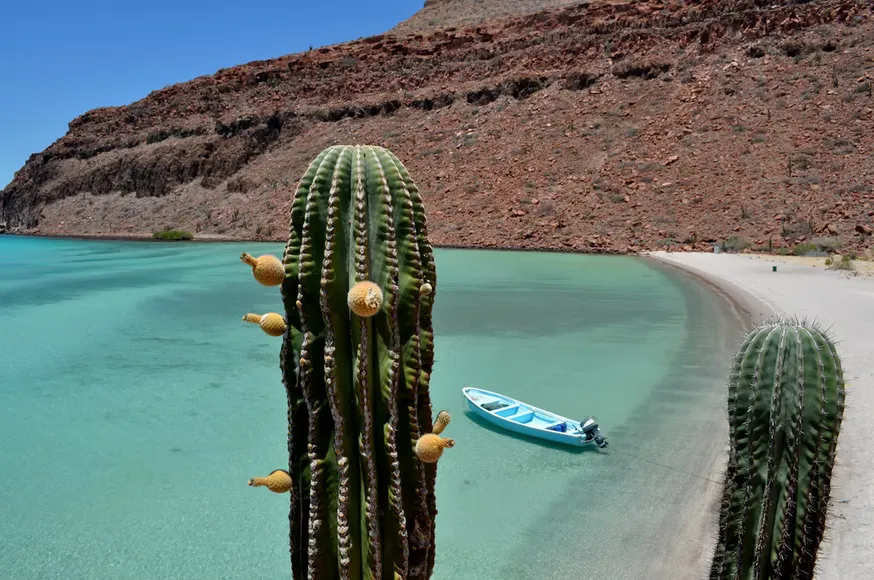
Photo credits📸: Constanza S. Mora
📍Baja California,México

5. Y tú... ¿Qué plan de conservación diseñarías para salvar a la vaquita marina?/ And you... What conservation plan would you design to save the vaquita porpoise?
Si yo tuviera el poder de decidir qué destino tendrá la vaquita marina y qué plan de conservación se llevaría a cabo, yo propondría algo que pueda ser eficaz pero alcanzable...
Primero, que las reservas que ya existen se amplíen, esto podría facilitar el monitoreo de las vaquitas y de esta manera sería más sencillo cuidar de la especie. Lo segundo que haría sería poner a cargo a los científicos especializados en diseño de áreas protegidas, o científicos que hayan estudiado a la vaquita anteriormente, estoy seguro que ellos serían los más calificados para llevar a cabo esa labor.
If I had the power to decide what fate the vaquita will have and what conservation plan would be carried out, I would propose something that can be effective but achievable...
First, that the reserves that already exist are expanded, this could facilitate the monitoring of the vaquitas and in this way it would be easier to take care of the species. The second thing I would do would be to put in charge the scientists specialized in the design of protected areas, or scientists who have studied the vaquita before, I am sure that they would be the most qualified to carry out that work.

Photo credits📸: Pascal van de Vendel
📍Gulf of California

This project is dedicated to the preservation of our sea, our rivers and lakes, our lagoons. Let's make it possible! Let's share scientific and quality information for the good of our aquatic world!
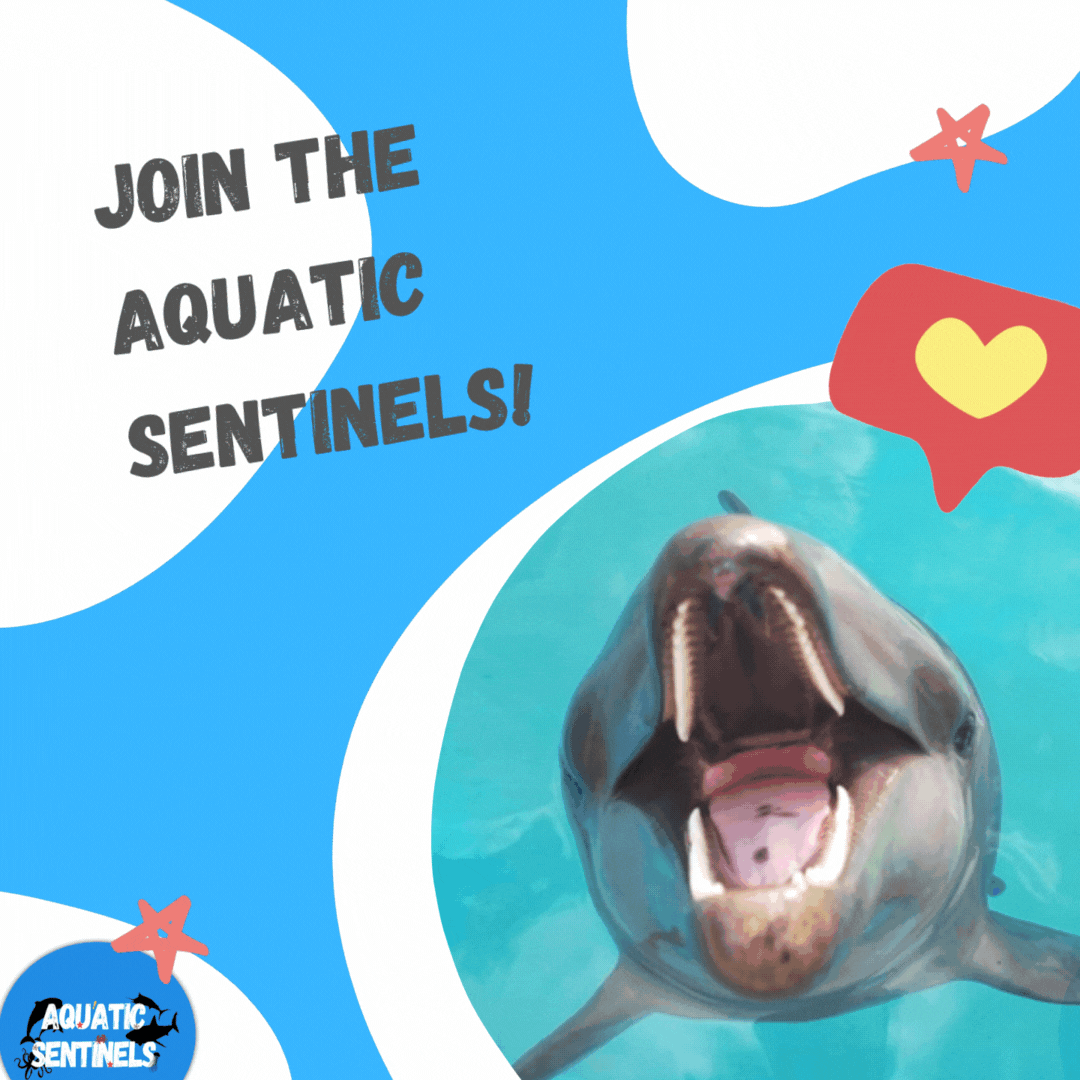
🐟🐋Welcome!🐬🐙

DNA - Densifying Nature-Appreciation :
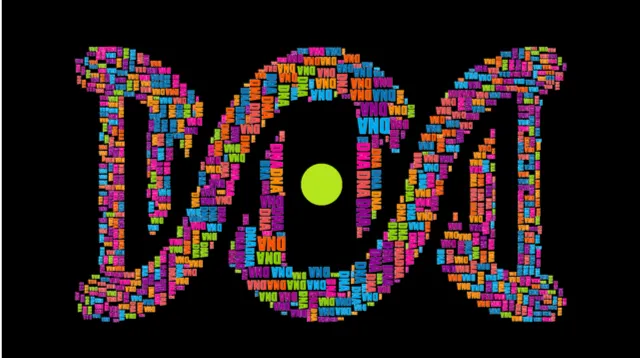
DNA is an organization to foster and DENSIFY NATURE-APPRECIATION which aims to establish REPORTS OF BIODIVERSITY DATA that is contributed by all of us Hiveans and subsequently cataloged.

DNA animation GIF by @Suheri
Therefore DNA searches for HIGH-QUALITY posts that aim to DESCRIBE and determine the BIODIVERSITY AROUND YOU with added EXPLANATIONS and INFORMATION. For these informative posts they offer a CURATION SERVICE using the @dna.org account. It is also a CURATION TRAIL. Just add the #dna TAG if you think that any of your posts is what they are looking for.
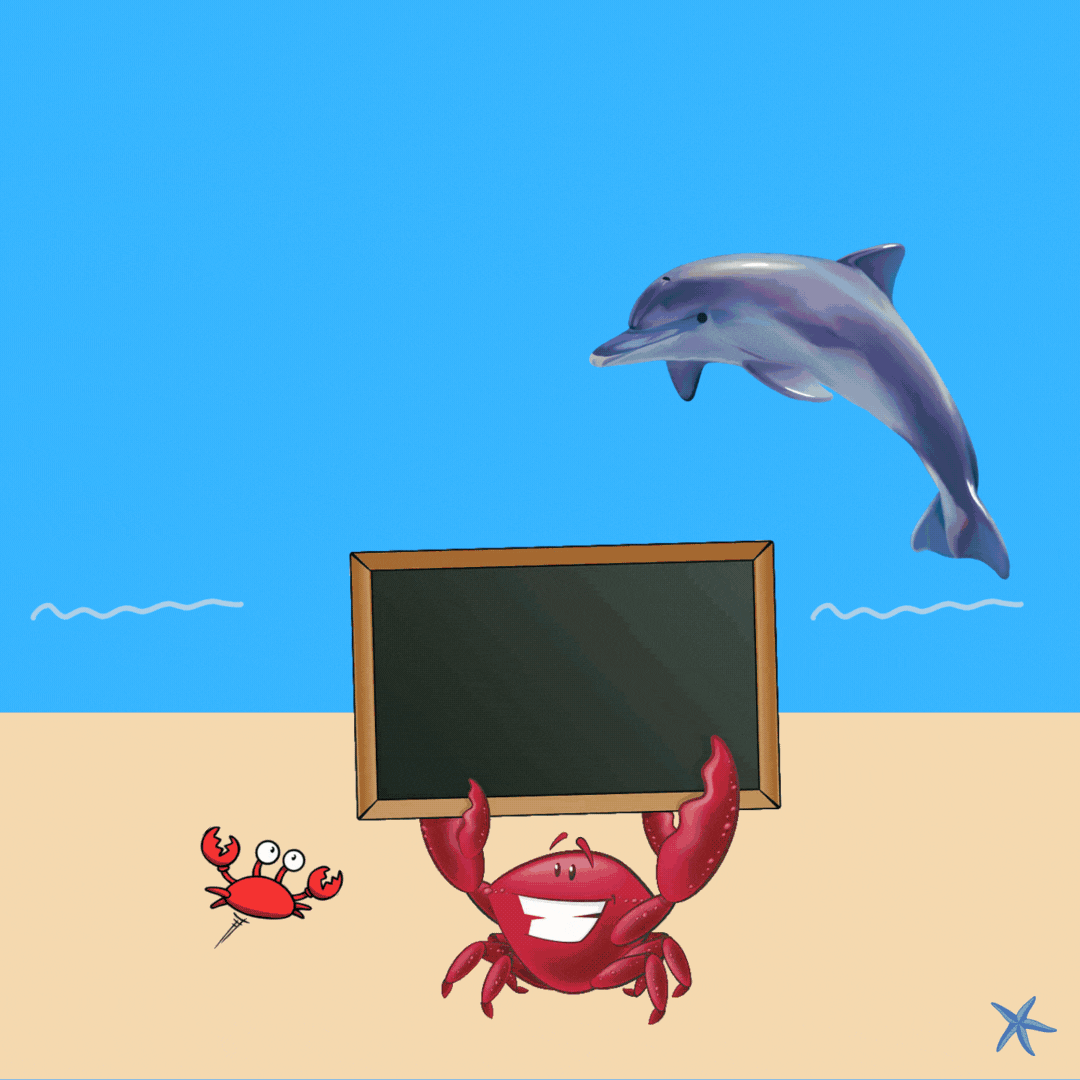
Aquatic Sentinels animation GIF by @juanbg
